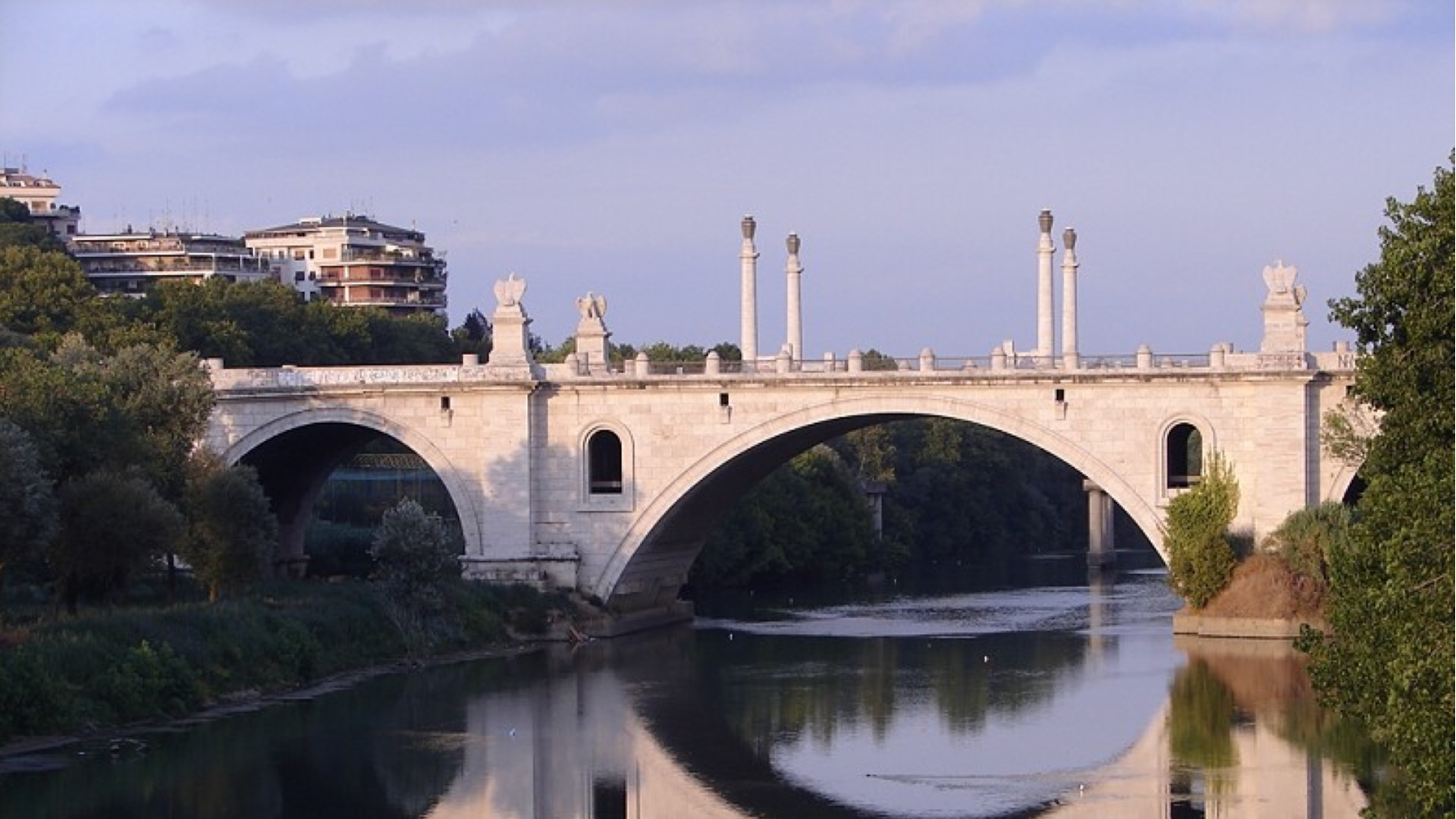
The need to cope with the increasing amount of traffic coming from the north, along the Via Cassia and Via Flaminia consular roads, as a result of the increased number of cars circulating in Rome, as well as the need to create a monumental access to the city and compete with those of the great European capitals: these were the reasons that led to the building of this bridge which, with its majesty, recalls some of the constructions of imperial Rome.
The eagles that adorn it, as a symbol of the military power of the Rome of the Caesars, and the imposing white travertine columns supporting the lampposts, refer to ancient Rome whose architecture was widely the inspiration for Fascist propaganda, which made the spectacular magnificence of its buildings its distinctive feature.
The bridge was designed by the architect Armando Brasini (1869-1965) and the works, entrusted to the Tecnobeton company and supervised by the engineer Aristide Giannelli (1888-1970), began in 1938; the name, originally "XXVIII Ottobre", was chosen to celebrate the fascist magnificence and in particular the day of the March on Rome.
However, due to damage to the structures during World War II, construction activities had to be suspended in 1943 and only resumed in 1947 after the end of the war.
The new bridge, connecting the ancient Via Flamina with Via Cassia, was inaugurated in 1951 and named "Ponte della Libertà" to commemorate the reconquered democracy. The name was finally changed to Flaminio in 1961, referring to the consular road.
254.94 metres in length and 27 metres in width, the Flaminio Bridge stretches over seven arches and is made of concrete entirely covered with Roman travertine in warm white tones.
Nanni Moretti, the multi-award-winning Roman director, celebrates its extraordinary beauty in his film Caro Diario, in which he says: "I don't know, I can't understand it. I might be insane, but I love this bridge. I have to cross it at least twice a day."
Information
 Condividi
Condividi
Location
To find out about all accessibility services, visit the Rome accessible section.











































